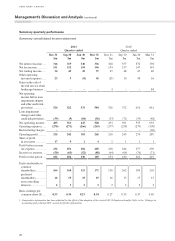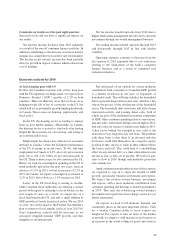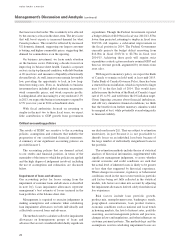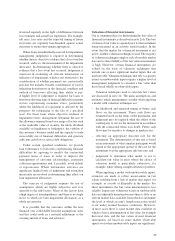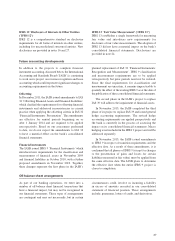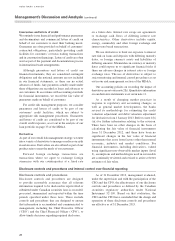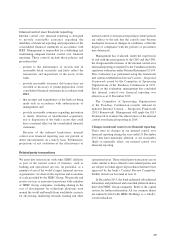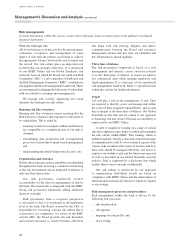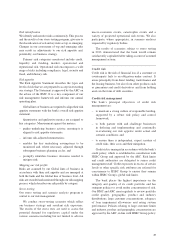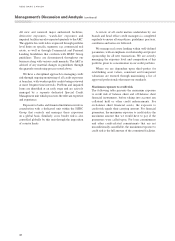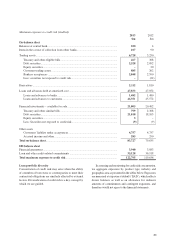HSBC 2013 Annual Report Download - page 34
Download and view the complete annual report
Please find page 34 of the 2013 HSBC annual report below. You can navigate through the pages in the report by either clicking on the pages listed below, or by using the keyword search tool below to find specific information within the annual report.
All new and renewed major authorized facilities,
derivative exposures, ‘watch-list’ exposures and
impaired facilities are also reported quarterly to the ARC.
The appetite for credit risk is expressed through portfolio
level limits on specific segments, e.g. commercial real
estate, as well as through Commercial and Personal
Lending Guidelines that conform with HSBC Group
guidelines. These are disseminated throughout our
business along with various credit manuals. The ARC is
advised of any material changes in guidelines through
the quarterly monitoring process noted above.
We have a disciplined approach to managing credit
risk through ongoing monitoring of all credit exposures
at branches, with weaker quality credits being reviewed
at more frequent time intervals. Problem and impaired
loans are identified at an early stage and are actively
managed by a separate dedicated Special Credit
Management unit which possesses the relevant expertise
and experience.
Exposure to banks and financial institutions involves
consultation with a dedicated unit within the HSBC
Group that controls and manages these exposures
on a global basis. Similarly, cross border risk is also
controlled globally by this unit through the imposition
of country limits.
A review of all credit matters undertaken by our
branch and head office credit managers is completed
regularly to ensure all our policies, guidelines, practices,
conditions and terms are followed.
We manage real estate lending within well-defined
parameters, with an emphasis on relationship and project
sponsorship for all new transactions. We are actively
managing the exposure level and composition of this
portfolio given its concentration in our credit portfolio.
Where we are dependent upon third-parties for
establishing asset values, consistent and transparent
valuations are ensured through maintaining a list of
approved professionals that meet our standards.
Maximum exposure to credit risk
The following table presents the maximum exposure
to credit risk of balance sheet and off-balance sheet
financial instruments, before taking into account any
collateral held or other credit enhancements. For
on-balance sheet financial assets, the exposure to
credit risk equals their carrying amount. For financial
guarantees, the maximum exposure to credit risk is the
maximum amount that we would have to pay if the
guarantees were called upon. For loan commitments
and other credit-related commitments that are not
unconditionally cancellable, the maximum exposure to
credit risk is the full amount of the committed facilities.
Management’s Discussion and Analysis (continued)
32
HSBC BANK CANADA


